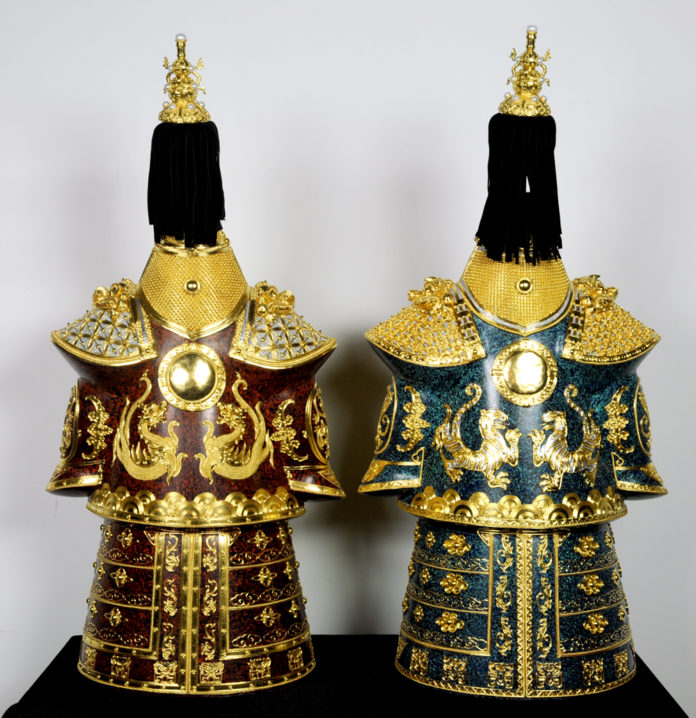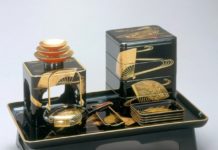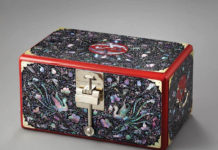Bodiless lacquerware is based on clay, plaster and wooden bodies, on which grass or silk cloth and raw lacquer are mounted layer by layer for drying, then the original body is smashed or removed, leaving the shaped lacquered cloth, to which is then added a gray background, polished, repainted lacquer and abraded, and finally added various decorative patterns.
Bodiless lacquerware are primarily produced in Fuzhou. These products can be roughly grouped into practical and ornamental categories, the most common among which are big vases, big floor screens and a variety of lacquer paintings. Every piece of artwork is the product of tens or sometimes even more than one hundred processes. There are about a dozen decorative techniques, including black brightening, colored brightening, brocade design, coating material thinning, gold-tinged lacquer painting, bronze coloring, conch shell inlaying, silver inlaying and rendering. Bodiless lacquerware produced in Fuzhou, with traditional Chinese red and black lacquer bases, uses true gold and silver powders as blending materials, solving the problem of lacquer becoming too dark black after being dried to be blended with other bright-color paints. It adds more bright colors to the lacquer mix, including blue, green and brown. It is also more exquisite in decoration by incorporating cut silver thread, cut gold thread, mother of pearl, and mosaics.
Due to time involved in its making and disadvantageous pricing, artisans inheriting the craftsmanship of bodiless lacquerware to date are few and far between. Lacquerware decoration techniques, including “brocade printing” and “tin decals inlaying”, have unfortunately been lost. National masters of this art include Wang Weiyun, Chen Duandian, and Lin Tingqun, all from Fujian.





